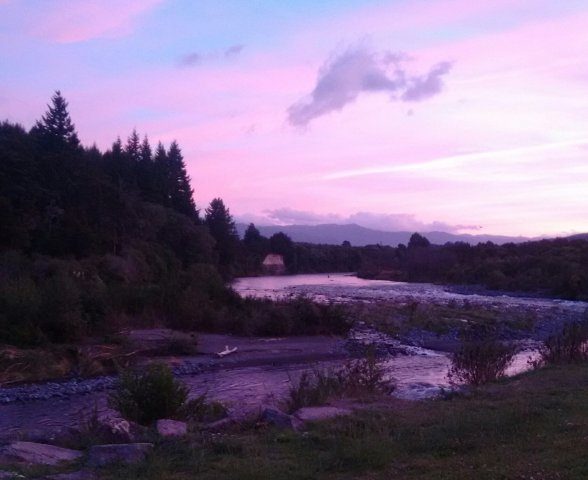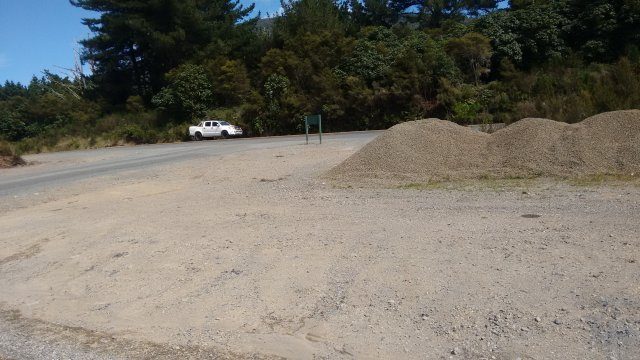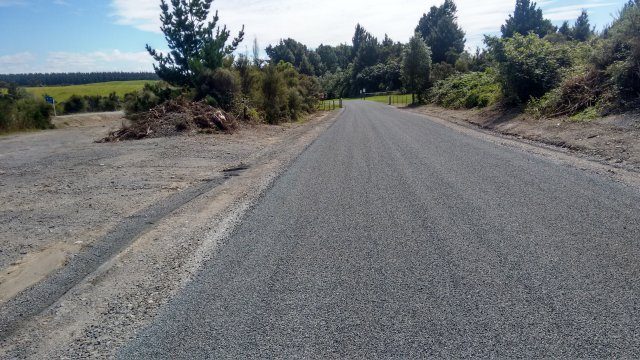In late February we had a better than 1 in 5 year flood with a flow rate at peak of 740 m3s
The flood had a good clean out of the river but a lot of debris left at the delta. Upstream of 1 km from the lake there was minimal change.
After a pleasant spell of warm weather it has rained most of the day and is, as I write this blog.
Weather and flow rate information
Genesis Energy have upgraded their website. Access for rainfall and flow rate for the Tongariro River is there still but if you have this link saved to your computer or cell phone as I do then you will need to re save if you haven’t already done so. To save go to
https://www.genesisenergy.co.nz/assets/rivers-lakes-rainfall
then click on Tongariro
then click on Rainfall which gives access to River Flows.
Genesis advice on Tongariro River Flows from 19th March to 24th March.
Genesis will be undertaking an inspection of the Moawhango-Tongariro Tunnel during which time no water will be diverted through Rangipo Power Station. Flows will be higher in the Tongariro River between Rangipo Dam and Poutu Intake. Flows will also be higher below Waihohonu Intake.
The work is planned from: Monday 19th March until Saturday 24th March 2018
Whilst the works are planned to be finished by Saturday 24th March, they may continue after this date for a short period if maintenance is required. Please be aware that the flows are subject to natural fluctuation (e.g. weather events). Please feel free to share this information with other river users (i.e. via website or social media pages).
If you have any questions or require further information, please contact Chris Ormandy on 07 384 7209 or [email protected].
Beautiful Evenings
There have been lovely sunsets in the evening. Autumn is the best of the seasons.
Fishing report
The fish are starting to gather at the river mouths but there seems to be little activity on the Tongariro at least by my observation and experience last evening. Small fish were leaping and gave a bite on the line but that was it. As I walked downstream at about 7.00 pm 3 anglers were leaving. All said they had caught fish but none were carrying fish.
Track conditions
I cycled the Tongariro River Trail on Monday. It was good to see the track clearing in evidence. It is the normal pattern for tracks to be cleared by Easter. Blackberry is prolific and berries are red with an occasional ripe one and will be ready shortly.
Improved entry off SH1 to DOC service area at the National Trout Centre site (NTC)
I was asked what was happening with road warnings in the area of NTC. A new point 100 meters south of the previous entry has been developed. The old entry point was incredibly dangerous as it was in a gully between two hills in the road giving very limited visibility in an open road zone.
New DOC office in Turangi.
DOC including DOC fishery are now located in the old Taupo District Council offices next to the Turangi Library. I have not been in to the building since DOC took up the space but staff are very pleased with it.
As a community Rep on the Waikato Regional Council, Taupo Zone Committee I attended the meeting on 1 March.
Topics discussed
- Efforts to have an Integrated Catchment Mangement Plan in place for the Tongariro River are still to be implemented. The ICMP means simply that all stakeholders know what actions are happening in the management of the river rther than each agency doing their thing with others unaware. We see it as a cost effective management device.
- The Tongariro and Tauranga Taupo Flood Protection scheme service level reviews have been received. Assets of the Regional Council include stop banks and the purpose of the 5 yearly review is to ensure flood protection for a 1 in 100 year flood. In some places there is a need for repair and top up of the stopbanks which leaves the town vulnerable to a 1500 cubic meter per second flood. It is a priority to have this work completed. Some problems exist where people (anglers) have driven over the stop banks to get closer to the fishing spot at the Bridge Pool.
- An interesting report was given by Dr Eloise Ryan on the recent algal bloom in Lake Taupo. There were 8 different species of algae involved but the science is in early days. The key fact was that it was toxic and research is happening to better understand the organism.
- Of Lake Taupo water the conclusions are:
- 1. The water quality of the open water is excellent
- 2. The Regional Plan aims to maintain this situation in the long term, even though some deterioration is likely between now and then.
- 3. Nitrogen concentrations in the lake and some inflowing streams have increase over the past 16-22 years: this is likely to be a legacy of historic land use practice in the ctchment.
- 4. The water in the lake is generally suitable for swimming, but ecoli concentrations an be high at beaches near some settlements. The three spots of concern are Acacia Bay, Te Moenga Bay and Taupo foreshore.
The development of the Long Term Plan; Council has the difficult decision to make between Biosecurity demands and raising rates. It is always to be remembered that the money Council has to satisfy its ratepayers comes from ratepayers. Biosecurity issues include the developing spread of Wallabies, Kauri dieback, Alligator weed and yellow flag iris, velvet leaf old man’s beard and climbing spindleberry, Wilding pine among other key concerns. As an aside, a friend has ordered a new Japanese vehicle. The car nearly arrived but returned because of brown marmorated stink bugs being found on the ship. It is the potential loss for NZ that demands action. I think that Turangi ratepayers will probably see a rise in WRC rates.
Sue Yerex advised that a new strain of rabbit virus had been relesed by WRC with the nearest release to the Tongariro River Catchment being at Kuratau/Omori area. Maybe the virus will be carried into this catchment.
The media release:
MEDIA RELEASE
27 February 2018
New rabbit virus to be released in parts of the Waikato
Waikato Regional Council will be releasing a virus to reduce the significant environmental and agricultural impacts of wild rabbits in some parts of the region.
It follows a decision by the Ministry for Primary Industries last week to grant approvals to Environment Canterbury, on behalf of a national consortium of agencies, for the importation and release of the new rabbit haemorrhagic virus disease strain, RHDV1 K5.
This is not a new virus. It is a Korean strain of the existing RHDV1 virus already widespread in New Zealand and only affects the European rabbit. RHDV1 K5 was selected for release because it can better overcome the protective effects of the benign calicivirus (RCA-A1), which occurs naturally in wild rabbit populations in New Zealand.
Biosecurity pest animals team leader Brett Bailey said: “This is not a silver bullet, but this new strain of virus is expected to support other control methods and help manage rabbits in areas where there are large populations of this pest.
Rabbits contribute to erosion and undermine buildings with their burrowing, and they affect dune restoration and native restoration programmes too.
“Now’s the optimum time to act, and we aim to have the release completed by the end of April. We’ve been working closely with local councils, as well as the Department of Conservation, to identify the best areas in our region to carry out the initial release.â€
In the Waikato, the virus will be released at sites in Pauanui, Whangamata, Thames, Matarangi, Hamilton, Cambridge, TaupÅ, Kuratau and Kinloch.
Mr Bailey said the council is aware of the conditions in the approval and will work to ensure they are met and effectively enforced. He said the release of the virus would be carried out by experienced contractors.
“The virus is specific to rabbits. Humans and other animals won’t be affected if they accidentally come into contact with carrots treated with the virus or the carcasses of rabbits killed by the virus,†he said.
A vaccine (Cylap) is available in New Zealand which has been helping to protect rabbits from the current RHDV1 for many years. Studies undertaken by the Australian government indicate that this vaccine will help protect pet and farmed rabbits against the RHDV1 K5 strain.
Pet rabbit owners are advised to talk to their local veterinarian to ensure their rabbits have the best protection available. Zoetis, the manufacturer of the vaccine, has confirmed that additional vaccine supplies have been made available in New Zealand for the release.
For further information, contact:
Wendy Valois
Communications advisor
07 859 2721 or 021 369 815
Thank you
Our membership is vital. Thank you for those who have renewed their membership for 2017 and to those intending to get subscriptions to us shortly. Welcome to new members.
AGM;
A reminder that the AGM is on 28th April. Our Annual Report should be emailed on Sunday 19th March with all the information. We would welcome nominations for new committee members. We look forward to meeting as many of you as can make it.
Eric Wilson
Secretary



